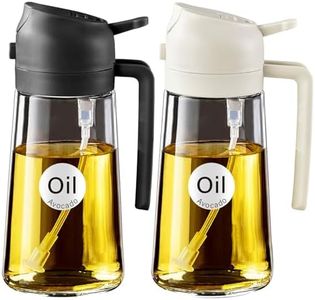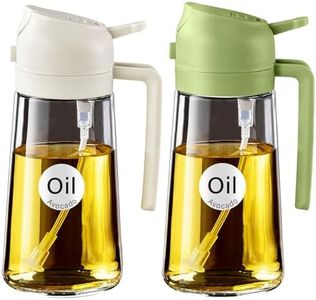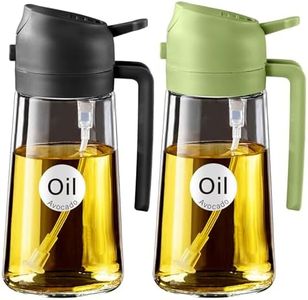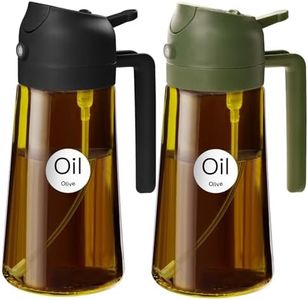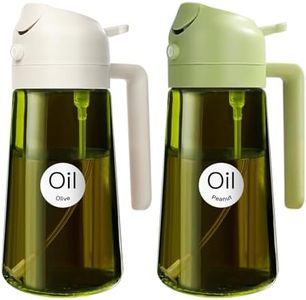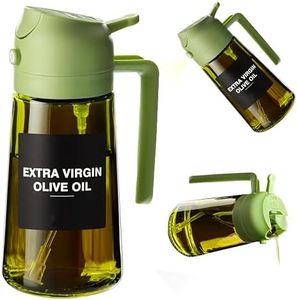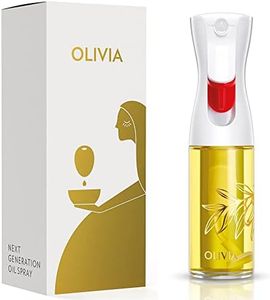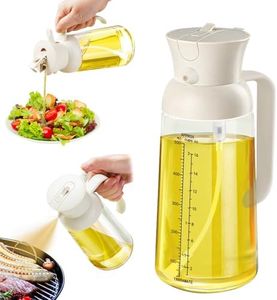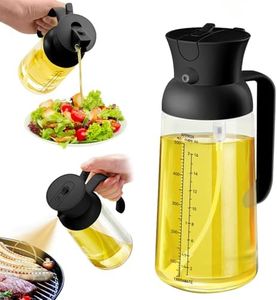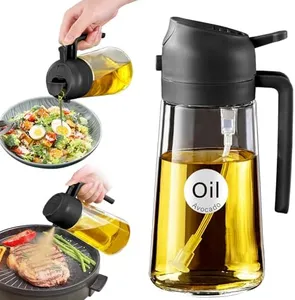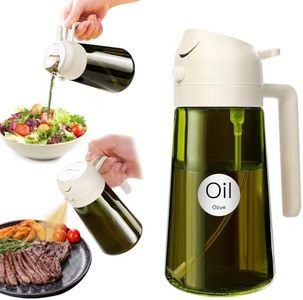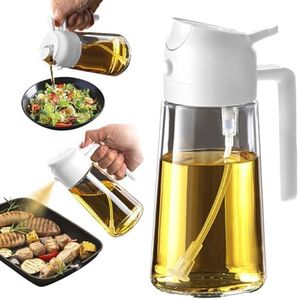We Use CookiesWe use cookies to enhance the security, performance,
functionality and for analytical and promotional activities. By continuing to browse this site you
are agreeing to our privacy policy
10 Best Kitchen Oil Sprayers
From leading brands and best sellers available on the web.By clicking on a link to a third party's website, log data is shared with that third party.
Buying Guide for the Best Kitchen Oil Sprayers
Choosing the right kitchen oil sprayer is all about matching your cooking habits and preferences with a sprayer's features. Oil sprayers make it easy to control how much oil you use, helping with portion control, even coverage, and healthier cooking. When comparing options, focus on durability, ease of use, how well it sprays, and how easy it is to refill and clean. Carefully consider each major feature before you make your final decision to ensure you get a sprayer that complements your kitchen routine.MaterialThe material of an oil sprayer often determines its durability, ease of cleaning, and safety. Most commonly, sprayers are made from glass, stainless steel, or plastic. Glass is non-reactive and easy to clean, but can break if dropped. Stainless steel tends to be robust and can add a modern touch, though you may not be able to see the oil level inside. Plastic is lightweight and resistant to breaking, but could absorb odors or stain over time. If you want something sturdy and see-through, consider glass; for busy kitchens or clumsy hands, stainless steel or high-quality plastic could be a safer bet.
Spray MechanismThe spray mechanism is how the oil is dispensed, and it's essential for controlling coverage and ease of use. Most sprayers use either a pump action or trigger spray. Pump-action models require you to pump the bottle to build pressure, then release a mist, while trigger options spray each time you squeeze. Pump models often provide a finer, more even mist but may need occasional repressurizing. Trigger models can be simpler and more immediate. If you need very fine control for low-oil cooking, choose a pump mechanism. For speed and less fuss, trigger sprayers may be more your style.
CapacityThe capacity refers to how much oil the sprayer can hold. Kitchen oil sprayers typically range from about 100 ml to 300 ml. Smaller capacities are good if you want to change oils often or avoid the oil going stale, while larger sprayers are convenient for frequent use. If you cook daily or use the same oil for most meals, a bigger size may be practical; for occasional or specialized use, a smaller sprayer keeps things fresh.
Ease of CleaningEase of cleaning means how simple it is to keep the sprayer free from oil buildup or residue, which can affect performance and hygiene. Some oil sprayers come apart easily and can be washed in the dishwasher, while others may require hand washing or have narrow necks that are harder to clean thoroughly. If you dislike washing by hand or switching between different oils, opt for a model that's dishwasher-safe and easy to take apart.
Spray ConsistencySpray consistency refers to how evenly and finely the oil is dispensed. A good sprayer delivers a fine, even mist, which helps coat pans, salads, or food without puddles of oil. Some models may squirt or drip if the mechanism is poor. If you need an even coating for roasting or baking, pay special attention to reviews or specs about mist quality; for general greasing, you may not need the finest mist.
Refill and Pour DesignThe refill and pour design focuses on how simple it is to add more oil and whether there's a wide enough opening for pouring without spills. Some sprayers have wide mouths, removable tops, or include funnels. If convenience matters or you have unsteady hands, look for a sprayer with a wide, accessible opening to avoid frustration and mess.
